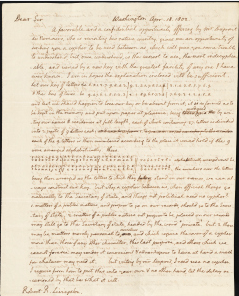Art & Exhibitions
Why Thomas Jefferson Called Dibs On Dinosaur Bones


Eileen Kinsella

President Thomas Jefferson asked for right of first refusal to acquire mammoth fossils uncovered in a dig of an upstate New York swamp in 1801, according to a current exhibition (opened October 30) at the Museum of the City of New York. “If they are to be bought, I will gladly pay for them,” Jefferson wrote in a letter dated December 14, 1801 to Robert Livingston, a New York lawyer who Jefferson chose to serve as “Minister Plenipotentiary,” or diplomat to France. “The bones I am most anxious to obtain are those of the head and the feet,” Jefferson wrote, according to a report in local online news service DNA Info.
The historical record, however, doesn’t reveal whether the founding father ever got his wish, according to DNA. The show, which runs through December 5, consists of letters that Jefferson wrote to Livingston and that provide insight into the political issues and challenges they faced, including trying to steer clear of the Napoleonic wars ravaging Europe, and negotiating the Louisiana Purchase.
One of the most fascinating aspects of the letters shows how Jefferson and Livingston developed a complicated encryption system to ensure that messages traveling 3,000 miles across the ocean did not fall into the wrong hands. According to the Museum of the City of New York blog: In 1801, Jefferson “did not have NSA supercomputers to create unbreakable encryption; there were no covert satellites to ping top-secret communications around the globe. All Jefferson had was a pen, paper and an enthusiasm for solving problems on his own.”